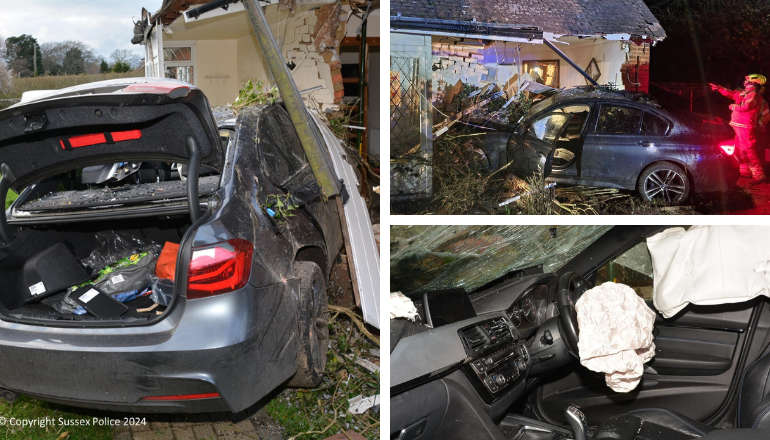
Adur District Council is increasingly seeking temporary accommodation out of the area to meet demand, a freedom of information request has shown.
Out of area placements – which are defined as any accommodation outside of the district – reached a six year high of 75 households in the second quarter of 2021.
The furthest that households have been placed is Northamptonshire and there are also records of accommodation in Medway.
ADC said it has also placed households in need of temporary accommodation in Worthing, Brighton, Hove, Crawley, Eastbourne, Horsham, Arun and Chichester.
In March 2015, only one household was placed outside of the district but this figure stood at 51 in March 2021 which shows a more than fifty-fold increase over six years.
In most cases, the majority of households placed in temporary accommodation have been pregnant families or families with children.
In June this year, 87 Adur households were placed in temporary accommodation. 75 of these households were placed outside of Adur, which means just 12 were placed within the district.
The council’s temporary accommodation policy states that a shortage of affordable housing and rising rental costs – factors it says are outside of its control – means that an increasing number of households will be placed outside the district.
Lee Cowen (Lab, Mash Barn), leader of the main opposition, said that placing families outside the district has a ‘worrying human cost’.
He said:
“The Labour group are aware of the increasing number of households being placed outside the district for emergency accommodation and this is not in the best interests of those families.
“The human cost of this policy is worrying: families in need of emergency housing are already in at least one vulnerable group, having experienced domestic violence, family breakdown or economic insecurity, including housing, food, energy and fuel poverty.
“Locating these families far away from their established location increases the disruption and alienation these families experience at a time which is already saturated with personal challenges.”
Mr Cowen said that one resident from his ward in Lancing was moved to a Gatwick Travelodge when she was 30 weeks pregnant.
He said this proved difficult for the woman who had to pay to park each evening as well as paying for fuel to travel to and from Lancing.
Mr Cowen said the resident – who is now in permanent accommodation – didn’t have cooking facilities and has been ‘moved from pillar to post’.
An ADC spokesperson said that the council ‘always takes the needs of people into consideration’ when they are placed out of the district.
They said:
“The housing team remains in contact with anyone living in temporary accommodation outside of Adur, and if they want to return we work with them to find a suitable home.”
They added that ‘the majority’ of people placed out of the area are living in West Sussex or Brighton and Hove and that anyone living outside of Sussex has been ‘moved at their own request’.
They noted that other local authorities should be notified when a resident is placed in temporary accommodation outside of Adur – a legal requirement of all councils using the practice.
The issue was raised during a full council meeting in July, when Catherine Arnold (Lab, St Mary’s) highlighted a £129,000 underspend on emergency and temporary accommodation in Adur’s budget for 2020/21.
She said:
“I really would hope that the sourcing of cheaper temporary accommodation to achieve this is not because we’re looking further afield, because we know what separating families can do when you need your support networks.”
Sharon Sluman (Lab, Mash Barn) said that out of district accommodation can disrupt families and support networks.
She said:
“Remote relocation removes people from their support networks when they need them the most and increases the cost and time required to attend work and school at a time when their resources are increasingly limited.
“Often, families are placed in emergency accommodation with no cooking facilities, meaning families are forced into further poverty and poor health by means of having to purchase fast food.
“Further to this, those parents are often penalised by the accommodation managers for such things as eating on the beds, when the reality is, they have no other place to eat.”
Council leaders have been contacted for comment but did not respond by the deadline.
Out of area temporary accommodation in the UK:
Data from the Department for Levelling Up, Housing and Communities which, until recently, was known as the Ministry of Housing, Communities and Local Government, shows that 95,450 households are living in temporary accommodation.
A quarter of these, or 26,170, are living outside of their local area which is three times the number from a decade ago.
Local authorities outside of London have placed 85 per cent more households out of their area in the last three years.
To view the Adur data, see this link: https://adur-worthing-hr.onmats.com/w/webpage/4525BBFCF1?context_record_id=9921347&webpage_token=ffdf1db6e74fd4ffa9abd5a0a8921df44fc5de42139de3f90492e11937f65b61

 Driver Disqualified After High Speed Pursuit
Driver Disqualified After High Speed Pursuit
 Prolific Brighton Burglar Returned To Prison
Prolific Brighton Burglar Returned To Prison
 Appeal After Collision Between E-Scooter And Cyclist In Lancing
Appeal After Collision Between E-Scooter And Cyclist In Lancing
 Goodwood Marshals Celebrate 25 Years Of Keeping Local Motor Sport Safe
Goodwood Marshals Celebrate 25 Years Of Keeping Local Motor Sport Safe
 Have Your Say On Proposals To Improve Hazelwick And Tushmore Junctions
Have Your Say On Proposals To Improve Hazelwick And Tushmore Junctions
 Preparing For Winter – New Gritters Ready To Roll Across Sussex
Preparing For Winter – New Gritters Ready To Roll Across Sussex
 Brighton Marina To Welcome Grotto And Toy Appeal This Festive Season
Brighton Marina To Welcome Grotto And Toy Appeal This Festive Season
 Sussex-Based Talent Celebrated At Prestigious Hendy Group Apprentice Event
Sussex-Based Talent Celebrated At Prestigious Hendy Group Apprentice Event
 Hailsham Mayor Launches Show Home At Cuckoo Fields Development
Hailsham Mayor Launches Show Home At Cuckoo Fields Development
 East Sussex Carers Could Be Missing Out On Rights And Support
East Sussex Carers Could Be Missing Out On Rights And Support